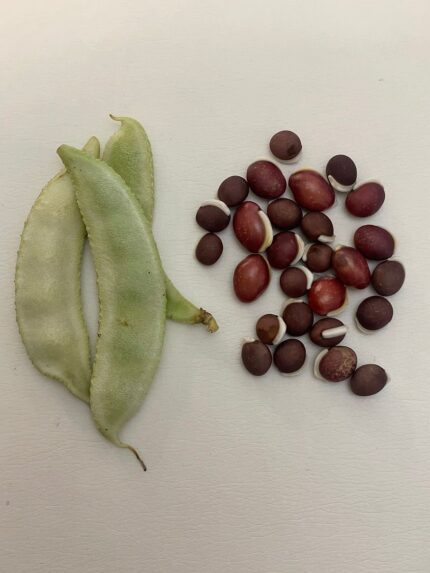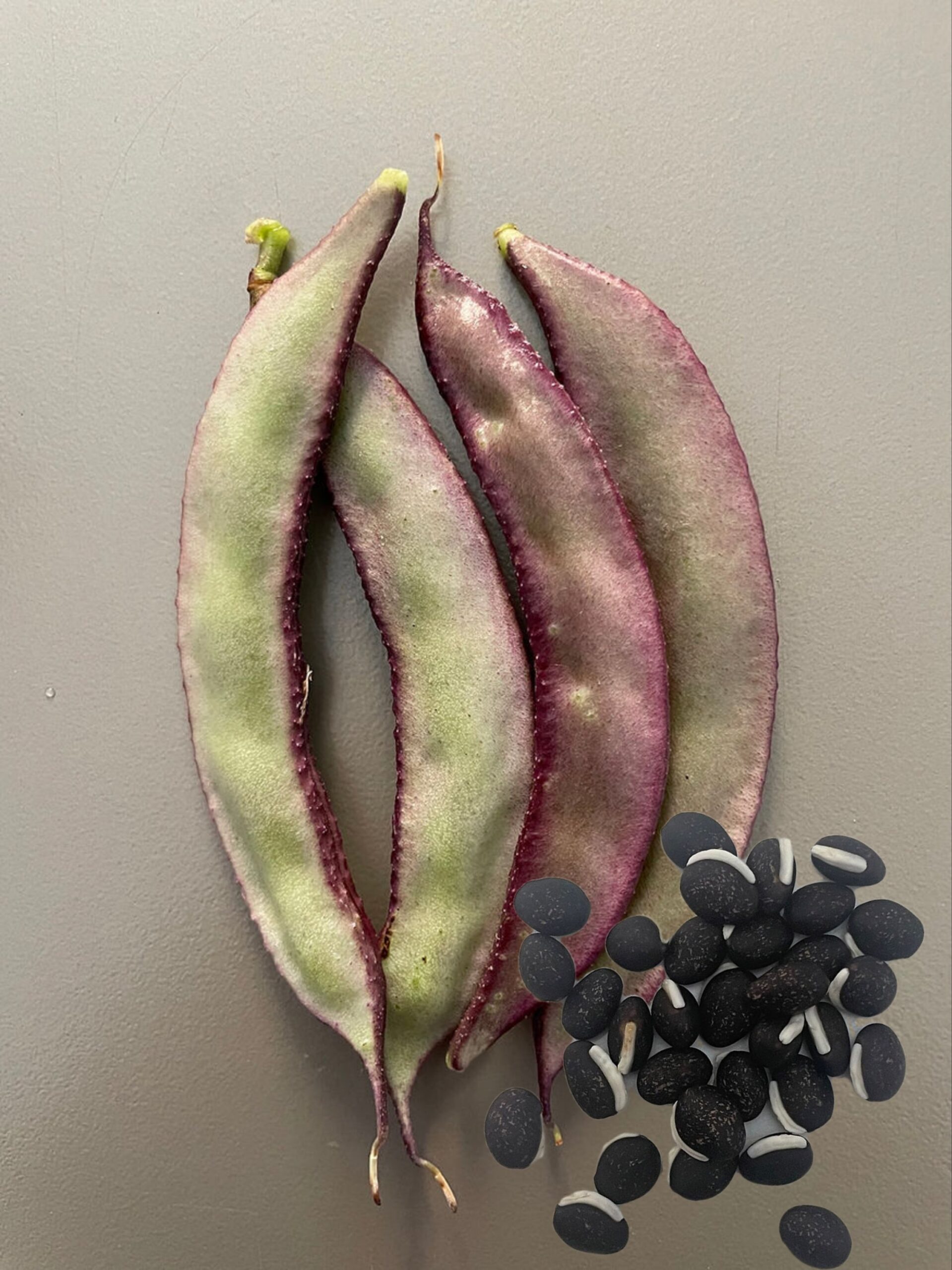White with Rose Long Broad Bean is a variety of broad bean (Vicia faba) known for its distinct appearance and characteristics. Here’s some detailed information:
1. Appearance:
– Seed Color: The beans are typically white with a rosy or pinkish tinge, which gives them their unique name.
– Pods: The pods are long and contain multiple beans (usually 4-6), which can be large and flat.
– Plant Growth: The plants are tall, growing up to 3-4 feet in height, and often need support or staking to prevent them from falling over.
2. Growing Conditions:
– Climate: Broad beans prefer cooler climates and can be grown in early spring or late autumn. They are frost-tolerant, making them suitable for regions with mild winters.- Soil: They prefer well-drained, fertile soil, with a slightly alkaline pH. Adding compost can help improve soil fertility.
– Sunlight: Full sun is ideal for maximum growth, though they can tolerate partial shade.
3. Cultivation:
– Planting: Broad beans are typically direct-seeded into the ground in early spring. The seeds should be spaced about 6 inches apart in rows that are 18-24 inches apart. Care: Regular watering is essential, but the soil should not be waterlogged. Beans gumes, so they fix nitrogen in the soil, enriching the soil for other crops.
– Pests & Diseases: Common issues include aphids, aphid-transmitted viruses, and fungal diseases like rust or downy mildew. Crop rotation can help reduce pest problems.
4. Harvesting:
– Broad beans are usually ready for harvesting 4-6 months after planting. Pods should be left on the plant until they are fully formed, but before they dry out completely.
– Harvesting should be done carefully to avoid damaging the plant. Beans can be eaten fresh, or the seeds can be dried for storage.
5. Culinary Uses:
– These beans are edible both fresh (when young) and dried (when mature).
– Fresh beans: Can be used in salads, soups, stews, or as a side dish.
– Dried beans: After drying, they can be used in various dishes like casseroles, soups, or bean dips.
– Taste: Broad beans have a slightly nutty and earthy flavor, with a creamy texture when cooked.
6. Nutritional Value:
Broad beans are rich in protein, fiber, vitamins (such as folate and vitamin B), and minerals (such as iron and magnesium).
– They are also a good source of antioxidants and low in fat.
7. Uses in Crop Rotation and Soil Health:
– As legumes, broad beans fix nitrogen in the soil, improving soil fertility for subsequent crops. They are often used in crop rotation systems to enhance soil health.
This variety of broad bean is valued for its resilience, unique appearance, and versatile culinary uses. If you’re considering growing them, make sure your climate is cool enough, and the soil is rich and well-drained.














Reviews
Clear filtersThere are no reviews yet.